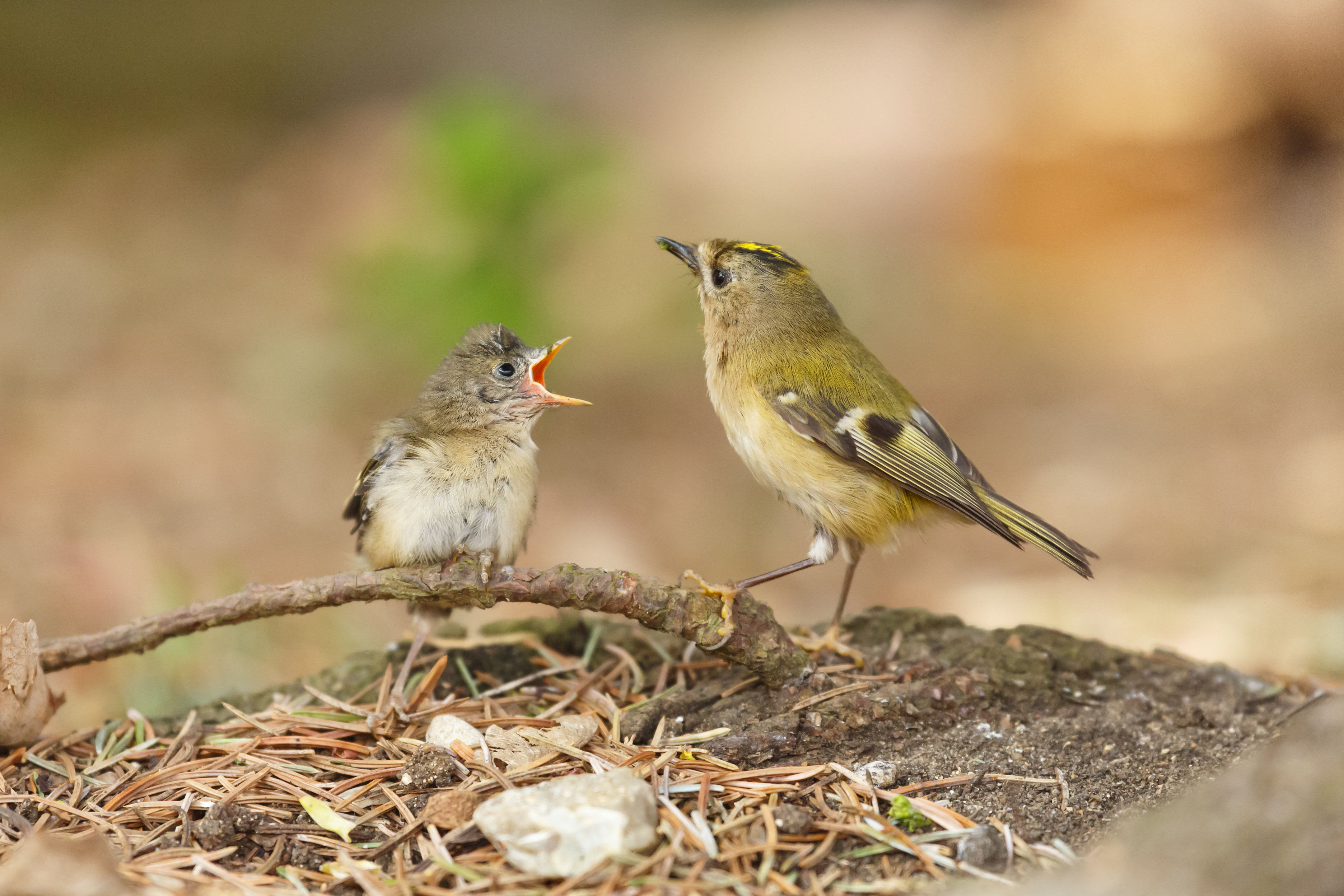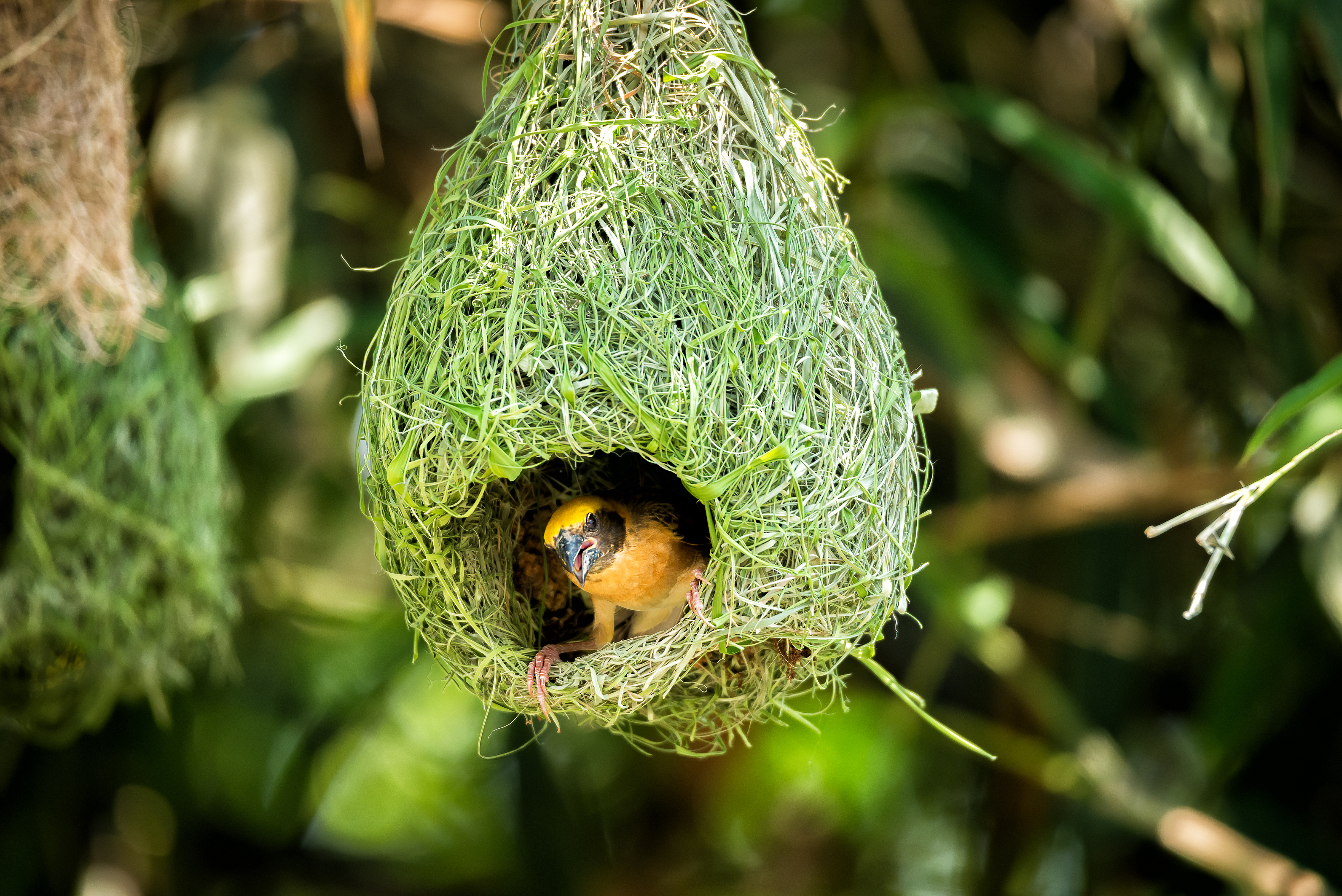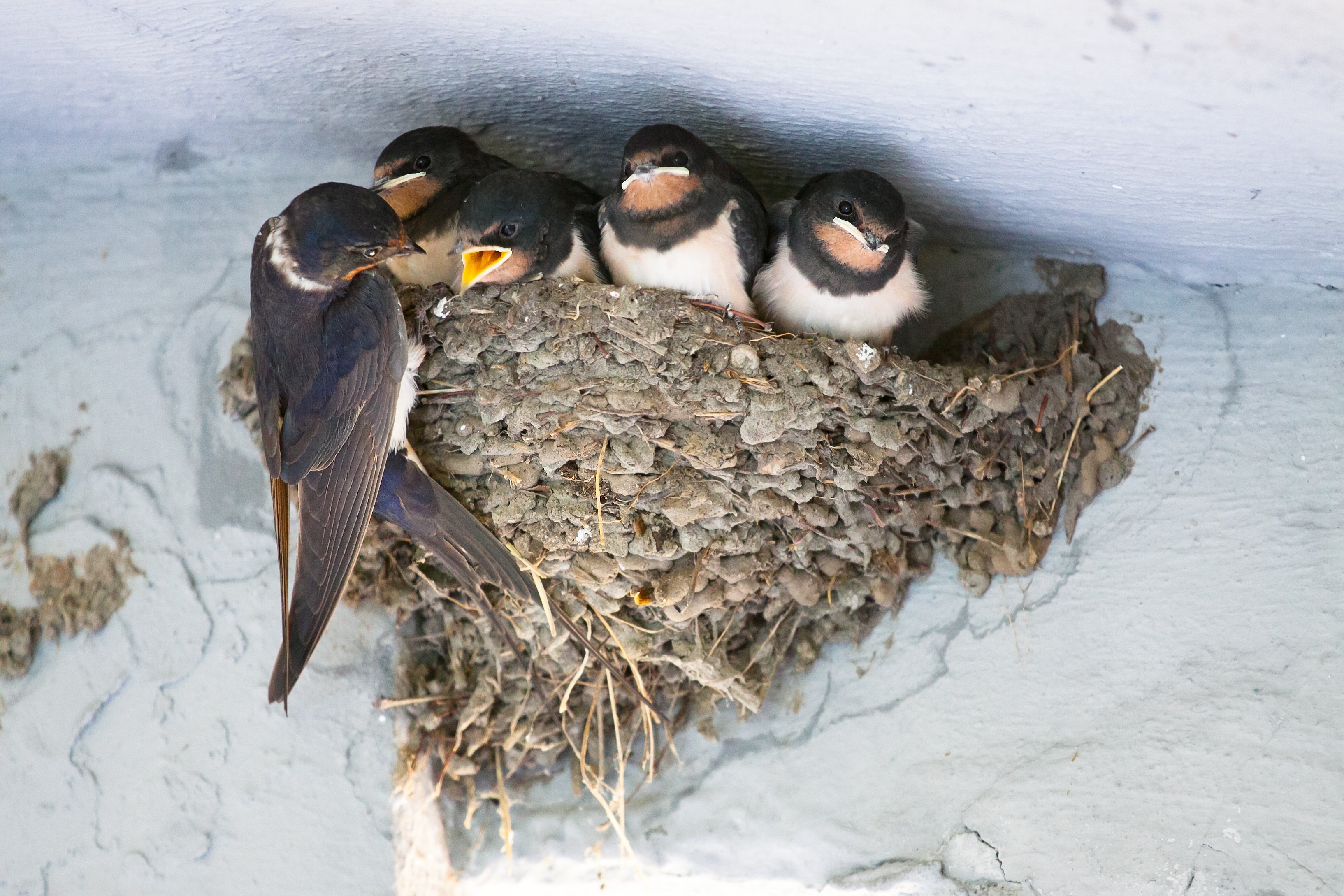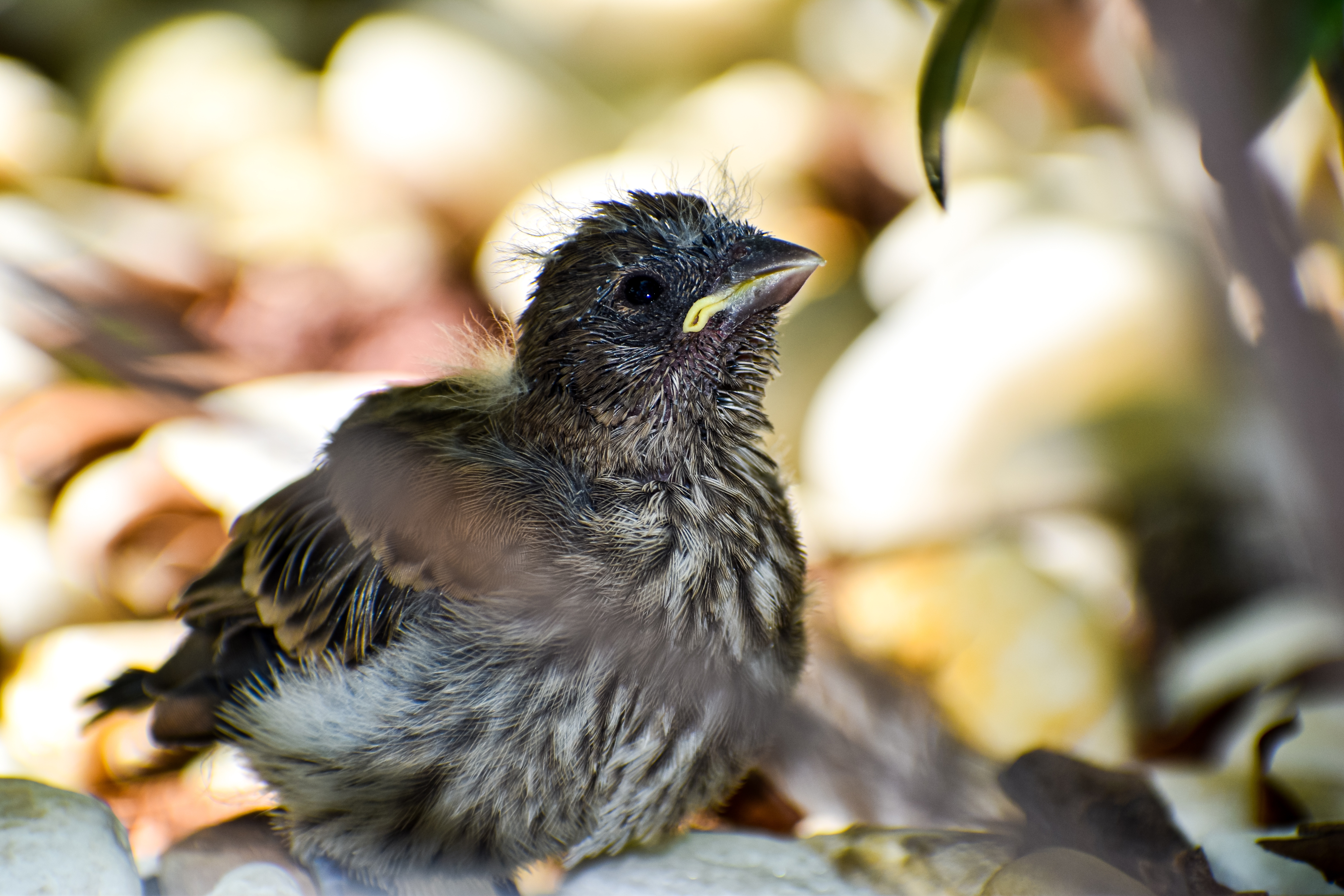|
Getting your Trinity Audio player ready...
|
It will be a long while before a baby bird builds a nest of its own. Yet, it doesn’t mean young birds spend the first few months indoors, as it were. Quite the contrary, independence starts at a very young age for birds. A bird who has left the nest naturally has grown to become a fledgling who suddenly calls the world its home instead of the sanctity of a protected nesting area. So, where do baby birds go when they leave the nest?
When they leave the nest, fledglings huddle together at night near to their parents. Any sheltered area is appropriate, but the denser the foliage, the better. Recesses within trees are popular roosting spots. Perches with shelter as high as they can reach, within thick tree foliage are common.
How long do baby birds stay in the nest?
There’s no single answer to the question, ‘How long do baby birds stay in the nest?’ Every species of bird leaves the nest at a different age. The soonest that a nestling makes the transition to fledgling is nine days. Yet, some large birds like geese only begin to venture out of their nest from forty-two days onward.
On average, most birds climb out of their nests at two to three weeks old. While nesting, the baby bird is constantly growing. Once strong enough, it will leave accompanied by its parents for some time.
Hatchlings don’t open their eyes for at least three days. Nestlings have open eyes and are developing feathers for around two weeks. At this point, their pin feathers begin to penetrate their sheaths, at which point they become fledglings.
Why baby birds leave the nest

Many species escape the nest as soon as possible, for obvious reasons. The fixed location of a nest makes it unsafe for a long stay. It is relatively easy for predators and parasites to find a nest and attack the birds. So, parents work hard to help their babies grow strong enough quickly, so they can leave the nest.
This results in four to five adorably awkward, fluffy feathered stump-tailed fledglings on average. It’s not uncommon to find groups of baby birds hopping and flitting around as they learn to fly. Their parents are always foraging, hunting, and keeping watch from nearby.
A baby bird’s first adventures outside of the nest
The fledgling phase begins at two weeks for most species. It begins when the baby bird has grown all its feathers and can walk. Flying isn’t yet possible.
However, the inquisitive little bird starts exploring outside the nest for the first time on foot. You’ll notice it finding its wings by means of hops and fluttering around until it’s practiced enough to take flight. Even when it looks like a fledgling is alone, there is almost always a mother or father nearby.
Parents remain close enough to feed at regular intervals until their young have grown significantly.
How do baby birds get back in the nest?

When a fledgling hops out of the nest, it will never climb back in. If one does, its parents will kick it straight back out. Yet, where do baby birds go when they leave the nest of their own accord?
Contrary to popular belief, birds do not sleep in nests after this point. Only birds who are incubating or keeping their babies warm will rest in a nest, as well as hatchlings, nestlings, and fledglings to a certain age.
A growing fledgling will not return to the nesting site to sleep, as the little one has both outgrown the area and no longer rests in a nest until one-day making babies of its own. The parents continue feeding for weeks after their young have left the nest.
Where do fledglings sleep?
Where baby birds go when they leave the nest depends on how old they are.
Young birds won’t venture far but the same can’t be said for mature birds. Fledglings typically huddle together at night out of sight and separate but in close proximity to their parents.
As the day draws to a close, each feathered family seeks out a safe place with a perchable surface to spend the night. Any sheltered area can serve as a place for fledglings to huddle together with their parents huddled separately nearby. The denser the foliage, the better. Recesses within trees are popular roosting spots.
Perches with shelter as high as the little ones can reach within thick tree foliage are equally common. Any cavity within a bush, thicket, or any form of vegetation that can limit access by predators and offer cover from the weather is a potentially good roosting spot.
If one had to find a fledgling at rest, the young one would be pressed up tightly against his, or her brothers and sisters with its head tucked tightly under one wing. The older the bird, the further it will roost from its nest.
How long do baby birds stay with their mother?

The degree of close association between birds following the fledgling stage depends on the species, but most parents will remain close to their young for up to a year. As soon as a baby bird leaves the nest, it no longer roosts directly with its parents. There are, however, certain species like swallows that build nests in secluded, difficult-to-reach areas that are nowhere near any other easily accessible perching spots.
These species will remain with their parents for the full span of the fledgling stage and only leave the nest anywhere between nineteen to twenty-four days after hatching. Swallows and similar birds are also among the few species that return to the nest after leaving for the first time.
They will typically return to the sanctuary of their nest for up to a week or more after first exploring the outside world, at which point they begin to build their own nests.
Make sure the baby bird is abandoned

Before rushing to help a baby bird that has fallen from its nest, keep in mind all birds have a nesting cycle. This will naturally lead them out of the nest at between two to three weeks old for most songbirds. Witnessing the experience of a fledgling encountering the outside for the first time, can appear clumsy.
This is normal. Watch from a distance. If the parents haven’t surfaced from hiding and silent observation within forty to sixty minutes, the baby bird most likely needs your help.
When help is needed for a Baby Bird
Birds aren’t able to lift their babies and return them to the nest. This is why it’s very important to return nestlings but just as crucial to leave fledglings alone.
Birds have a terrible sense of smell that’s far inferior to humans. Don’t let the old wive’s tale of leaving a scent that gets the baby rejected by its parents stop you from helping. It is impossible.
Do your best to try to return any bird without feathers or just a few feathers to its nest before taking it in. Keep in mind, finding a nestling fallen from its nest is a far rarer occurrence than confusing a fledgling with a scant covering of feathers for an outright baby.
Always make sure that your intervention is necessary.
Make sure the fledgling is abandoned before acting
The way to confirm that a fledgling is abandoned is to patiently watch from a distance. Most would-be rescuers find that the parents of a seemingly abandoned bird return within an hour to an hour and a half.
- Keep in mind baby birds need feeding every two to three hours for the first stage of their lives.
- Find a concealed place to keep an eye on the little one without making your presence obvious.
- Watch the fledgling to make sure it’s not threatened by cats, rats, birds, or other predators.
- Observe for anything between forty minutes to two hours if you want to be certain of abandonment.
Final thoughts on taking care of a rescued bird
After reading this article, you should not need to wonder where baby birds go when they leave the nest again.
If the parents haven’t shown up within two hours, then it’s unlikely that they’re going to. Unfortunately, this means that one or both were injured and most likely fatally. If the worst occurs and the parents don’t come back, you’ll need to follow our guidance on how to save a fledgling bird on the ground.
Our articles have everything you need to know to give an endangered baby bird the best chance of survival.
Join Us
If you enjoyed this Blog, we would like to offer you FOUR of James King’s books and our Newsletter as a gift.

